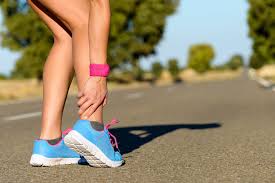 So week 7 done and dusted and we are over half way through our training programme! I have to say it has been harder than I thought. My running group have been struck down by the dreaded Sick and Tired disease. Symptoms include: 1. Sore legs 2. Extreme fatigue 3. Excessive sweating 4. Poor performance 5. Low mood 6. Sore legs (need to list it twice for emphasis) My whole running group (except for Richard who seems to have been born with immunity) have been struck down to a greater or lesser degree. Sore legs is the worst and most common symptom. We have a range of sore knees, sore ankles, sore heels and sore toes!!! Patellofemoral Pain syndrome or Runner’s knee. Runner’s knee is usually caused by either a mal tracking patella or poor biomechanics. The patella sits in your quadriceps muscles and if one of the quads is stronger than another it can result in a pull of the patella causing it to mal track in its groove causing pain. Poor biomechanics can be a result of issues coming from the feet or from the pelvis. Your physio should be able to determine the likely cause and address it. The treatment initially is RICE (Rest, Ice, Compression, Elevation). Compression is usually in the form of taping to relieve the pressure on the patella and reduce swelling and pain. Ongoing rehab will include exercises to address the under lying cause so if muscle imbalance is the cause then your physio will give you specific exercises to correct it. Similarly if poor biomechanics are to blame specific exercises can help as can properly supportive shoes or orthotics. Achilles tendonitis This is usually an overuse injury, very common amongst runners due to the repetitive nature of running. It can also be caused if you up your training too quickly or suddenly add hill sprints into your routine. Like Runners knee, weak muscles can play a part and in the case of Achilles tendonitis it is usually the calf muscles that need strengthened. In the early stages RICE is the best treatment. Ongoing rehab will consist of concentric and eccentric strengthening exercises which, take it from me, definitely help in the management of this condition. Check out this article on how to perform the eccentric strengthening exercises for Achilles tendonitis http://sportsmedicine.about.com/od/injuryprevention/qt/Achilles-Strengthening.htm Plantar Fasciitis Plantar fasciitis or joggers heel is a common cause of heel pain in runners. It is caused by an over stretching or tearing of the fascia on the sole of the feet. This can be because of over use, tight calf muscles, overzealous hill sprints or wearing the wrong or old trainers. As with all these inflammatory conditions RICE is the first line of treatment, then stretches for the calf and the plantar fascia. A common way of stretching the fascia on the sole of the feet is to get a plastic coke bottle (a 600ml one), fill it with water and put in your freezer. Once is has frozen roll the arch of your foot on it (place a thin towel between your foot and the bottle first), use gentle pressure to get a good massage to the foot. One thing I have noticed about all these injuries is the cause is usually tight or weak muscles and or the wrong shoes. So we need to get to strength training, do our stretches and buy lots of new trainers!!! Must show this to dear hubby now that I have a medical reason why I have to buy so many shoes!! So when treating the Sick and Tired disease we have the following treatment plan: SYMPTOMS AND TREATMENT 1. Sore legs RICE, strength training, stretching, lots of new supportive trainers preferable in really nice colours 2. Extreme fatigue Get a good night’s sleep otherwise suck it up! We are training for a marathon of course you’re tired! 3. Excessive sweating Apparently the fittest people sweat the most so bring it! 4. Poor Performance See number 2 5. Low mood Buck up we only have 6 weeks to go!!! Yay!!!
3 Comments
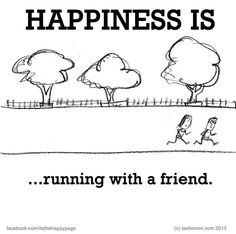 The Joy (or not) of running When I first started running in 1995, I ran to get fit and lose weight, not because I liked it. But once I got passed the “Please God somebody shoot me” feeling I actually started to enjoy it. Actually I didn’t just enjoy it, I became hooked, I loved it. This love of running came only when running was much less about exercise and much more about mental wellness. Back when I started running I ran with my sisters, Ali and Julie, and it became our time to connect and catch up with each other. It was the time of the week where we talked about our lives and loves, “He said what??!!!” “He did what??!!!” We solved all the worries of the world on those runs. Fast forward 20 years and I still love running or should I say loved running. Somewhere during these last few weeks of marathon training I have not loved a single run. In fact every run has felt hard (some harder than others when excessive poo is involved!) Usually when I run it feels easy, I get lost in my music and my thoughts, I marvel at the sun rises and the beautiful surroundings…. but not now. Now all I think about are times, cadence, my posture, gels, hydration, how much further, how am I going to run twice this distance on marathon day? The joy of running had kindof disappeared…. I was very anxious about my long run this week after my last disastrous run but I kept telling myself that I have had my bad run, it’s behind me, good to get it out of the way. Saturday morning came, my running pals and I were warming up when who appears, but my sister Ali! She has had a crap week and needs a running debrief! I could have hugged her!!! Ali and one of my running pals, Jess, ran with me for 15 of my 24km. We talked the whole time about our work, our families and the situation in the Middle East. Ok, not the last bit we aren’t that clever, Ali’s only a doctor and Jess a teacher for goodness sake! It didn’t matter what we talked about, it was FUN! 24km is the farthest I have ever run in my life but it definitely wasn’t the hardest! I realised I don’t love running because of a speed I can do or a distance I can cover. I love running for that mental release from the everyday, the connection with other runners and the friends I have made. Oh and coffee afterwards! Can’t forget that! 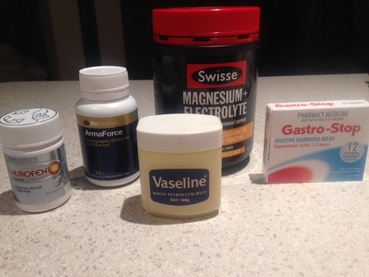 This week I had a cold, but you can still train with a cold, right? Well, sometimes… I go by the rule that if the symptoms are above the neck, so, runny nose, sore throat etc you can train but if the symptoms are below the neck like a chest infection or flu then don’t train. In a study done at Ball State University in America, they had two groups of 30 runners. They inoculated both groups with the common cold. All symptoms were above the neck, so no fever or body aches and pains just nasal symptoms, headaches etc. One group didn’t train for a week and the other group ran every day for 30 to 40 minutes each day. The study showed at the end that there was no difference between the groups with respect to severity or duration of their cold symptoms. Having said that you do need to listen to your body. If you are suffering from more than a minor cold, are really fatigued or have a temperature, it is better to take a few days rest now than risk potentially prolonging your illness by pushing yourself to run. So, my Life Fit running buddies and I did 10km on Wednesday, 8km on Thursday and then our long run was 20km. My cold had not improved and if anything was quite a bit worse but symptoms still above the neck so I was running. I got all my gear ready the night before; Vaseline to prevent chafing (my friend Zoye’s tip which worked a treat!); neurofen for my Achilles tendonitis issue; Armaforce to treat my cold; electrolyte drink for hydration; Gastro stop, well to stop….you know. So running gear all laid out, off to bed nice and early to get a good restorative night’s sleep. That was the plan. It worked until 3am when dear hubby started snoring (after a night at the pub with, I hate to say it, two of my running pals, Ant and Geoff, who, I might add, were noticeably absent the next morning for our run!!!!!!) So from 3am I was awake! Not great prep for a run. Anyway got up at 5am and took all my concoctions, loaded my fuel belt with water and gels and headed out. We started off on our 20km run with a 5km loop around Kiama then headed off to beautiful Minnamurra for the rest of the run. By 5km I felt awful! My legs were heavy and tired and I started getting stomach cramps. My mind was working overtime “Just ignore it, keep running, it won’t last, don’t worry, it will be fine”. At 10km I took my first gel. By 13km I was in desperate need of a toilet, “Oh My God, where is the toilet, am I going to make it, oh there it is up ahead, out of my way old man!!” Finally reached the public toilet and……. Well you can guess the rest. I don’t know how long I spent in that blessed toilet, delayed somewhat by the tiny little squares of toilet paper! I finished my run in a record slow time with an average pace of 6.09min/km. When you have a really bad run the most important thing is to learn from it. What I learnt:
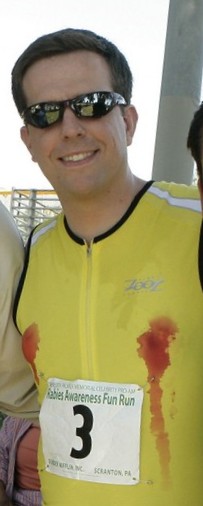 Ok, so inner thigh chafing is trumped by nipple chafing, now that's gotta hurt! Ok, so inner thigh chafing is trumped by nipple chafing, now that's gotta hurt! Thanks for the great feedback last week regarding nutrition while running. I tried it out on my long run on Saturday with the Life Fit runners. I took an electrolyte drink 30 minutes before my run (thanks for the tip Juls!), then an Endura gel at the 10km mark. Gels aren’t a particularly pleasant thing to eat, (actually you don’t really eat it, more just suck it down, as it is the consistency of gooey baby food) but it wasn’t as bad as I feared either. It definitely had a positive effect on my running though. I felt like my legs were on automatic pilot for the next 30 minutes, then I was due to take another gel but having only three kms left to go, I didn’t bother. In hindsight though I should have taken it as the last three kms were a definite struggle. Every little niggle started to really bug me. The fuel belt (holds your water bottles and gels) I had borrowed from my running buddy Jess hadn’t bothered me before but it suddenly decided to start moving around my stomach. One minute a water bottle was in front of my stomach then it was at my side then behind me. It was like a tight fitting hula hoop – extremely irritating! Then the chafing started… I think my thighs had expanded during the run, that, or my running technique got so poor that I couldn’t run a step without my inner thighs high fiving each other as they passed. Chafing hurts! Especially when you hit the shower later!!!!! Note to self, make sure the paw paw cream is well applied before next run! Pacing One of the things I have been concentrating on this week is pacing. So here is my plan: Interval training (Tues) – fast tempo runs, short distance, high intensity Medium distance run (Wed) – Race pace Fastish shorter distance run (Thurs) – 30 secs per km faster than race pace Long run (Sat) – Slow as I like So what I need to work out then is my race pace. Theoretically you just figure what time you want to run the marathon in and divide the number of minutes by 42.2. So for me I am aiming for 4 hours and 15 minutes so 255/42.2 = 6min/km. But really how do you know if you are capable of running at that pace for 42.2 km until you have done it? One article I read said to work out your predicted marathon time you double your half marathon time and add 10 minutes. I don’t buy into that one at all. That would make my predicted marathon time 3 hours and 22 minutes! That ain’t gonna happen I can guarantee you that! Another predictor of marathon time is Yasso’s 800s. You figure out what time you want to do the marathon in say 4 hours and 15 mins and change that into minutes and seconds so 4 mins and 15 secs. That is the speed you need to be able to run 800 metres in, not just once though, you need to be able to run ten x 800m in a speed of 4 min 15 secs each time. If you can do that you can run your marathon in 4 hours and 15 mins! So that worked out we need to look at splits. Do you want to run positive splits, negative splits or even splits? (Told you this marathon training business is complicated!) Positive splits is where you run the first half of your race slightly faster than the second half so you have “banked” some minutes up your sleeve if your pace starts to falter in the second half. Negative splits is the opposite of that where you run your first half slower than your second half knowing you are keeping some energy in the tank for a strong finish (I am surprised that most runners surveyed would prefer negative splits because for me I know I have nothing at the end of a race). Then there are even splits which is my preferred choice where you try and maintain your pace throughout. One of my running pals, Ros, sent me an article and it applauded not only even splits but even effort. So if you have to run a hill don’t try and maintain the same pace, just try to maintain the same effort, which makes good sense I think. But one of the best pieces of advice I have read about how to pace your race for a marathon is: Rule number 1 – Don’t go out too fast Rule number 2 – see rule number 1! 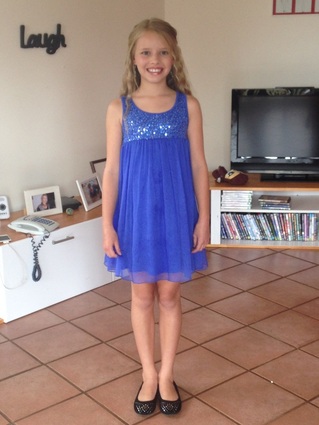 Turns out training for a marathon is quite stressful. I find myself thinking about it pretty much all the time and even dreaming about it. When I think about how I will feel the morning of the race I feel a sickening panic rise within me and I have to quickly dismiss it from my mind. My friend suggested I think of something more stressful I have had to do and then the marathon won’t seem as daunting. I was trying to think of something when in steps my daughter Lily. This is Lily, she is 11 and an aspiring model. Modelling wouldn’t be my choice of career for her and something I have tried to discourage her from. But Lily is a nagger on the grandest scale. When she wants something she will ask and ask in her broken record, drive you mad style until you give in! Anyway her first casting for a TV ad was last week. The catch was they needed a mother as well so I had to audition too. We drove to Sydney and lined up with all the other little girls (who looked a lot like Lily) and their very glamorous mums. I could feel the anxiety start and trickles of sweat running down my back. Eventually it was our turn. Lily got up and faced the camera doing everything she was told. I looked on and saw how shy and unsure she was compared to the other kids who had gone before her. Then it was my turn…. The anxiety I had been feeling escalated to a feeling of panic. I had to look at the camera, relax, smile, don’t smile, turn right, turn left, tilt my chin down, lift my head up, look happy, look sad, look cheeky … it went on and on. I tried to respond appropriately, smile when told to etc. But suddenly I realised I had lost voluntary control of my facial muscles! My mouth started quivering uncontrollably and my lips were bared back against my teeth. I can only imagine how horrifying the image was for the poor camera man! I just wanted the floor to open up and swallow me. Lily calmly told me afterwards that it looked like I had tourettes, (we had watched a show the night before on tourettes and facial tics so she knew what she was talking about). It was seriously one of the most cringe worthy events of my life. Now, thanks to Lils, I had my perspective back. Face the starting line or face the camera, I will take the starting line any day!! So perspective intact, back to the serious and complicated business of marathon training. Turns out you can’t just pull your trainers on and start running, oh no, there is a lot more to it than that. One thing me and my running buddies have to address is sports nutrition. Fuelling your body with electrolyte drinks and energy gels seems to be something you have to do to avoid hitting the dreaded wall and getting a decent finishing time. The whole gel thing is something I have been dreading as I know they can mess with your insides and give runners stomach cramps or worse. (Don’t get me started on the poo horror stories!) According to Runners World “Guide to your First Marathon” we need to take in 45-60 grams of carbs each hour during the race. Carbs come in the form of energy gels, sports drinks or chews. These carbs should be taken every 20 minutes. So if an energy gel is typically 45g – should I take a third of it every 20 minutes? So, if that’s the case, I would need to take 4 or 5 gels to get me through a marathon, does that sound right? Then what should you drink, electrolytes or water or both. I have read that you need to drink water with the gels or they don’t absorb properly into your system. It all seems so complex!! The choice of gels seems endless as well. There are all different brands, different flavours, some with caffeine some without. I NEED HELP!! CALLING ALL MARATHONERS PLEASE POST YOUR ADVICE ON WHAT WORKS FOR YOU AND WHAT DOESN’T!!! 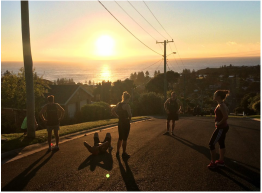 Does this look appealing? Does this look appealing? Week 2 – Marathon training Good week of training this week, did three strength sessions, two 8km runs and one 12km run. Missed out on interval training again though. Interval training for me is like going to the dentist, I know I should go regularly but I really can’t stand it. It has something to do with running so hard and fast, your lungs are bursting, then the nausea hits, followed by the taste of vomit in the back of your throat. It’s that bit I don’t like… don’t know why… Hot ‘n hilly Just doing my normal runs this week was so hard just because of the extreme heat. I ran one of my runs with the Life Fit runners at 5.30pm and it was still thirty degrees!! It felt like running through soup. It didn’t help that one of my running buddies decided to set a crackin’ pace of sub 5min/km for the first two kms – thanks Ant!! It also didn’t help that the run was incredibly hilly (have I mentioned how hilly Kiama is?) It is nearly impossible to run any distance in Kiama without coming across a hill. I am not talking about a slight incline either, our run had an elevation of 108 meters, that’s the equivalent of a 32 story building! We are so used to running hills that when the Life Fit runners ran City to Surf last year we didn’t notice Heartbreak Hill. Seriously, we finished the race asking, “Where was Heartbreak Hill?” Running in heat The heat this week was a timely reminder of the importance of drinking plenty of water to keep hydrated. Signs you may be dehydrated 1. Dry mouth and lips 2. Headache 3. Dizziness and confusion 4. Dark coloured urine, (it should be pale coloured) 5. Turgor (elasticity) of the skin – Pinch the skin on the back of your hand for a few seconds then let go. The skin should quickly return to normal but if it takes a while to resolve then you are very dehydrated. Five Tips on how to stay Hydrated Check out this article on how to stay hydrated while running in excessive heat, http://www.runnersworld.com/drinks-hydration/stay-hydrated-on-a-hot-run But ultimately the best way to cool off after a run is what my running group did - jump in Kiama Rock Pool!!! Running a Marathon? How hard can it be?!!! 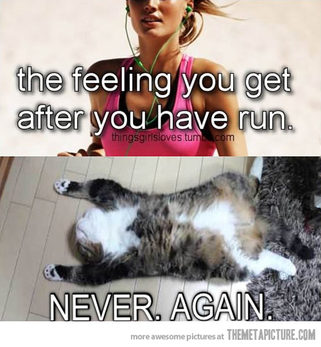 I first started running in 1995. I use the term “running” very loosely because in those days running meant the odd run around the block probably covering a distance of no more than 1km before collapsing on the ground in exhaustion. I lived in Belfast then so if you were daft enough to do anything vaguely energetic you really had to redeem yourself in front of your mates by taking yourself off to the pub for a few bevvies and a fag (by that I mean cigarettes!) I persevered with running with the help of my sisters (Ali and Julie) who also ran. It was much less embarrassing if you ran with other people because seriously not a lot of people ran back then and you were openly starred at and considered quite odd! I improved somewhat (especially after I gave up smoking) and was able to comfortably run 5 or 6km on a fairly regular basis. It wasn’t until I moved to Australia however in 2004 when running became an integral part of my life. Running became something more than a hobby for me or something you “should” do to keep fit. It became time for me, time to escape the stresses of daily life. Life at that stage consisted of a husband, 5 year old twins, a 12 month old baby and a full time job. Believe you me I was stressed to the nines! Fast forward to now, 2015. I run regularly with a great group of runners at Life Fit in Kiama. Kiama, if you haven’t been, is a beautiful seaside town on the South Coast of New South Wales. It is very picturesque and incredibly hilly. Our group have been running together since April last year and in that time we have tackled the Gold Coast marathon (where I did the half) in July, the City to Surf in August, the Husky Half in September and finally Run Wollongong (12km) in October. This year a bunch of us have decided to take the plunge and try our first marathon!! (Scary but exciting!!) We have devised a 13 week training schedule trying to encompass all the do’s and don’ts of training for a marathon. We have put strength in there to make sure we engage our gluts and quads, we have thrown in interval to increase speed and of course longer runs to build endurance so we should be fine…. Shouldn’t we?? My first week went okay ish. I only managed one strength session instead of two and didn’t make it to interval training at all but I did my two 6km runs and one long run of 12km so not too bad. I am going to chronicle the next 12 weeks of training, wish me luck! |
AuthorHi, we are LifeFit Trainers Kerry Philp & Jill Files! Archives
January 2016
Categories
All
|
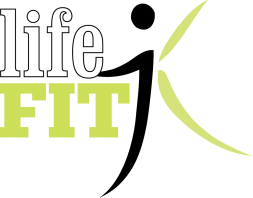
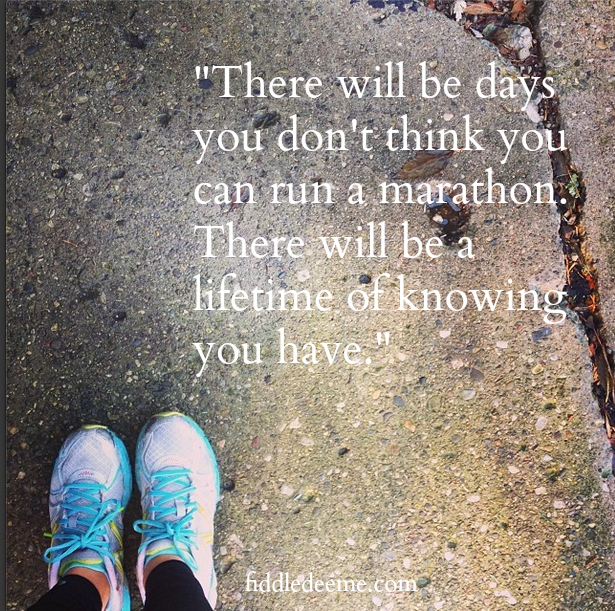
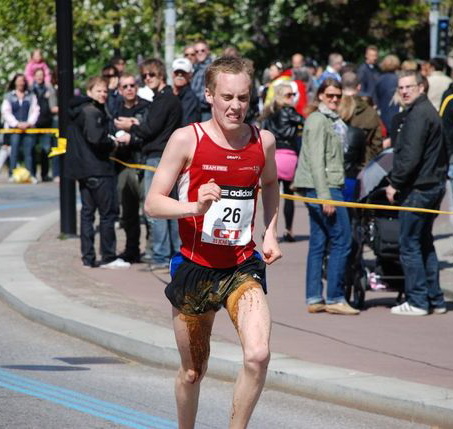
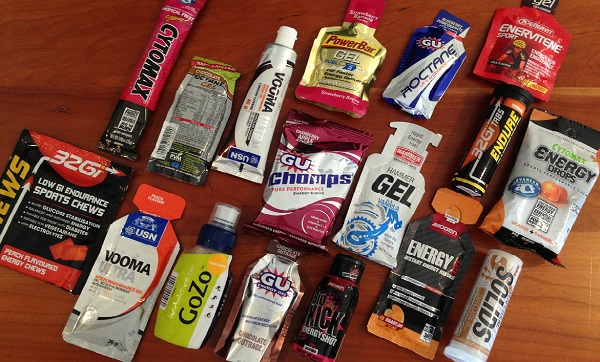
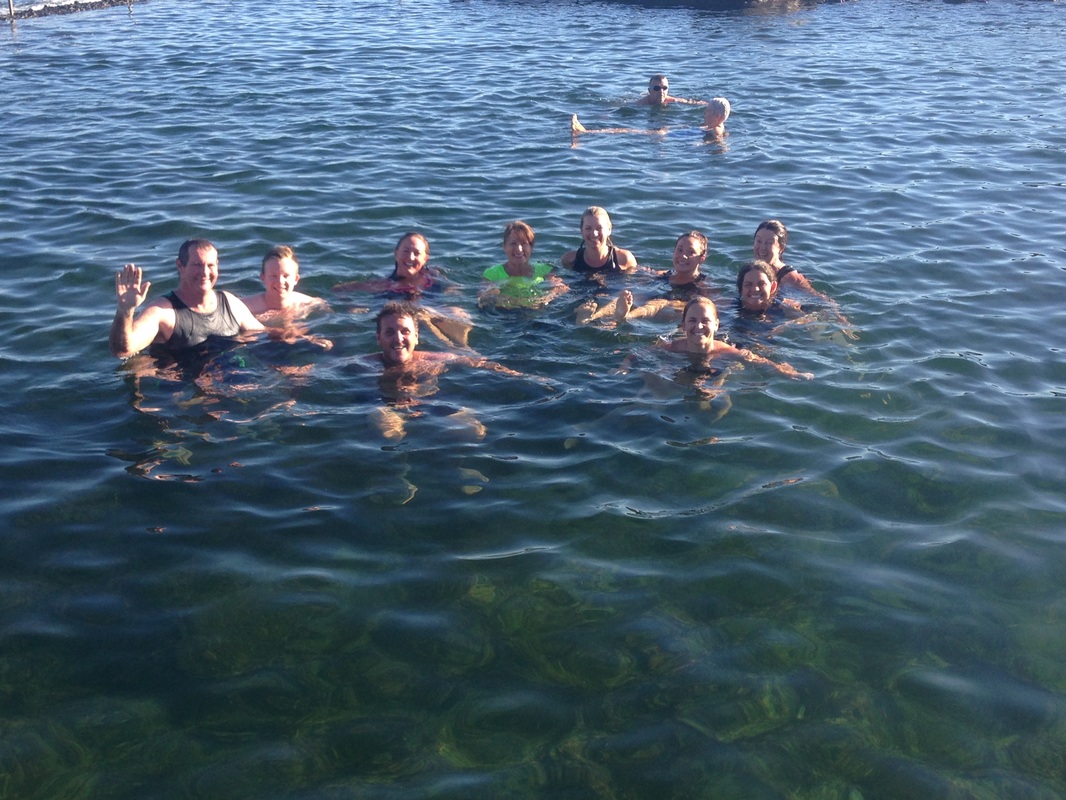
 RSS Feed
RSS Feed